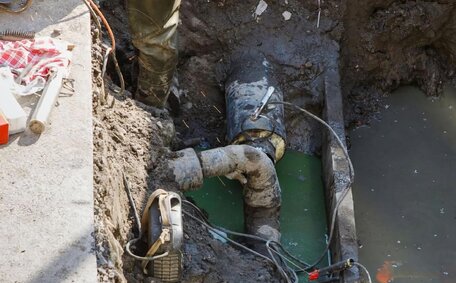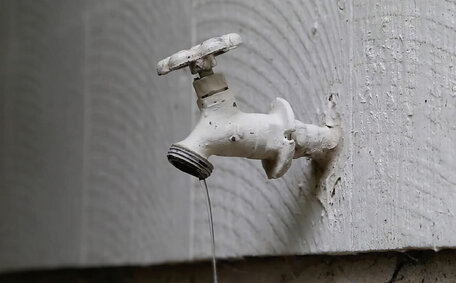Introduction to pipe relining
Pipe relining is a trenchless method of repairing damaged pipes without having to dig them up. Pipe relining is often necessary when plumbing pipes have become damaged or corroded over time.
It involves inserting a resin-impregnated liner into the existing pipe and curing it in place to form a new, jointless pipe within the old one. Issues like pinhole leaks, cracks, blockages, root intrusion and loss of water pressure can all indicate that pipe relining may be required.
For property owners, pipe relining offers a cost-effective and minimally invasive solution. Relining also reduces disruption to the household compared to conventional pipe replacement methods.
It prevents the need to dig up floors, walls or landscaping to access and replace pipes. Incorporating keywords like 'hot water’ and 'blocked drains’, pipe relining can provide solutions for common plumbing problems without major demolition work.
Pipe relining process explained
The pipe relining process is a multi-step trenchless repair that renews pipes without having to dig them up. Here is an overview of what’s involved:
- First, the plumbing system is accessed at an entry point like a manhole or cleanout. A camera inspection checks the pipe condition.
- The pipe is cleaned to remove any built-up debris or root intrusions.
- A flexible resin-saturated liner or 'cured-in-place pipe’ is inserted into the damaged plumbing pipe.
- The liner conforms to the shape of the original pipe, forming a tight seal against the walls.
- The resin is cured, usually with hot water or steam, to harden the liner.
- Finally, service connections are reinstated, and any access points are sealed. The relined pipe now functions like new.
Pipe relining can repair issues like cracks, leaks, blockages, loss of water pressure and root intrusion. It restores the pipe’s structural integrity and flow capacity. The process is minimally invasive, with little demolition to walls, floors or landscaping.
Cost comparison of pipe relining vs replacement
When deciding between pipe relining and full replacement, cost is often a major factor. Here’s a comparison of typical costs:
Pipe relining
The average cost to reline a sewer pipe is $80-250 per linear foot, with most jobs costing $125 per foot on average. Factors like pipe length, material and accessibility can affect the price.
Relining a 50 foot section of 6 inch clay sewer pipe might cost around $6,250.
Sewer pipe replacement
Replacing sewer pipes costs $400-1000 per linear foot on average. The national average for a full sewer line replacement is $4,000-12,000.
Replacing that same 50 foot section could cost $20,000-50,000 for materials and excavation work.
Key differences
While relining is generally 60-90% cheaper than replacement, its suitability depends on pipe condition. Severe corrosion or collapsed pipes may need replacement.
Other factors like tree roots increasing relining costs or pipes under foundations making replacement more complex can also impact the decision.
Overall, pipe relining provides a proven, minimally invasive and cost-effective alternative to replacement in many situations.
Factors affecting pipe relining costs
Several key factors can influence the total cost of pipe relining services:
Pipe materialThe existing pipe material affects relining costs. Plastic pipes like PVC are easiest and cheapest to reline. Materials like cast iron, clay, concrete or galvanised steel are more difficult and expensive.
Pipe sizeLarger diameter pipes require more resin and effort to reline, increasing costs. 6-8 inch sewer pipes are common, but bigger pipes like 10-15 inches can be much more expensive.
Pipe lengthLonger pipe runs mean higher material and labour costs for relining. Excessively long lateral pipes may become cost prohibitive.
AccessibilityIf pipes are buried deep underground or run under foundations, accessing them for relining requires extra excavation work and expense.
Pipe conditionp>p>p>
Benefits of pipe relining for property value
Pipe relining can significantly increase the value of a home or investment property. Here are some of the key benefits:
Avoids property damage
Instead of demolishing walls and floors to access pipes, relining repairs plumbing from the inside. This prevents damage to landscaping, tiling, carpets and structural elements.
Saves replacement costs
At just 20-30% of replacement costs, relining provides huge savings. This extra money can be invested in other home upgrades.
Extends plumbing lifespan
The 50+ year design life of installed liners exceeds that of traditional piping. Relined pipes are structurally renewed and protected from future corrosion.
Increases rental demand
Tenants appreciate updated plumbing systems and are often willing to pay higher rents. Reliable plumbing also means fewer costly repairs.
Improves saleability
Relining pipes adds value for prospective buyers. It shows off improved plumbing with minimal disruption to the property’s structure and layout.
For homeowners, the benefits of pipe relining make it a worthy investment. It prevents damage, saves money, and adds real long-term value to any property.
Pipe relining increases lifespan of pipes
p>p>p>p>p>p>p>p>p>p>p>p>p>p>p>p>p>
Pipe relining prevents sewage leaks and pollution
One of the most valuable benefits of pipe relining is its ability to prevent sewage leaks and groundwater pollution. When pipes leak due to cracks, blockages or root intrusion, raw sewage can escape into the surrounding soil. This leads to environmental contamination and health hazards.
Sewer pipe relining provides a long-term solution that stops leaks at the source. The structural liner seals cracks and joints in pipes, preventing further leakage. Relining also removes obstructions and clears roots to ensure sewage flows freely again.
It provides a permanent barrier that keeps sewage contained within the piped system.
Pipe relining contains leaks before pollution spreads. Contaminated groundwater can spread over large areas undetected. Without relining, leaking sewage can be an invisible threat.
For properties near lakes, rivers or stormwater drains, preventing sewage infiltration is critical. Relining sanitises ageing pipes, reducing risks to local waterways, soils and public health. By stopping leaks before they start, pipe relining delivers environmental and community benefits.
Pipe relining provides permanent solution
p>p>p>p>p>p>p>p>p>p>p>p>p>p>p>
Certified pipe relining guarantees and warranties
When choosing a professional pipe relining company, it’s important to look for certifications and guarantees that ensure quality workmanship and lasting results. Here are some key things to look for:
Certified technicians
Look for pipe relining companies whose technicians are certified through industry bodies like NASSCO (National Association of Sewer Service Companies). This confirms they are properly trained to industry standards.
Warranties
Many companies offer warranties of 50+ years on pipe relining. This guarantees the liner against defects in materials or workmanship. Typically warranties cover repairs, replacement and labour if issues arise.
Satisfaction guarantees
Reputable companies may provide a satisfaction guarantee, promising to redo the work if you aren’t fully happy with the pipe relining results.
Code compliance
Pipe relining should always comply with relevant plumbing codes and standards. Ask for documentation to confirm compliance.
Insurance backing
Liability insurance and workers compensation coverage protects you financially in the unlikely event of damage to your property or technician injury during relining.
Doing your homework helps find an experienced, insured and certified pipe relining company you can trust to provide guaranteed results and peace of mind.
Conclusion
In summary, pipe relining is an excellent solution for homeowners looking to repair and protect their plumbing systems. Compared to full replacement, relining is far less invasive, faster, and dramatically more affordable. It prevents property damage, saves on demolition and restoration costs, and extends the lifespan of pipes by decades.
By sealing leaks and preventing pollution, pipe relining provides environmental benefits as well. And the structural renewing of pipes adds real value for homeowners and prospective buyers alike.
With industry-backed guarantees and warranties, pipe relining delivers reliable, long-lasting results. For a permanent plumbing solution that avoids excavation and disruption, pipe relining is highly recommended.






